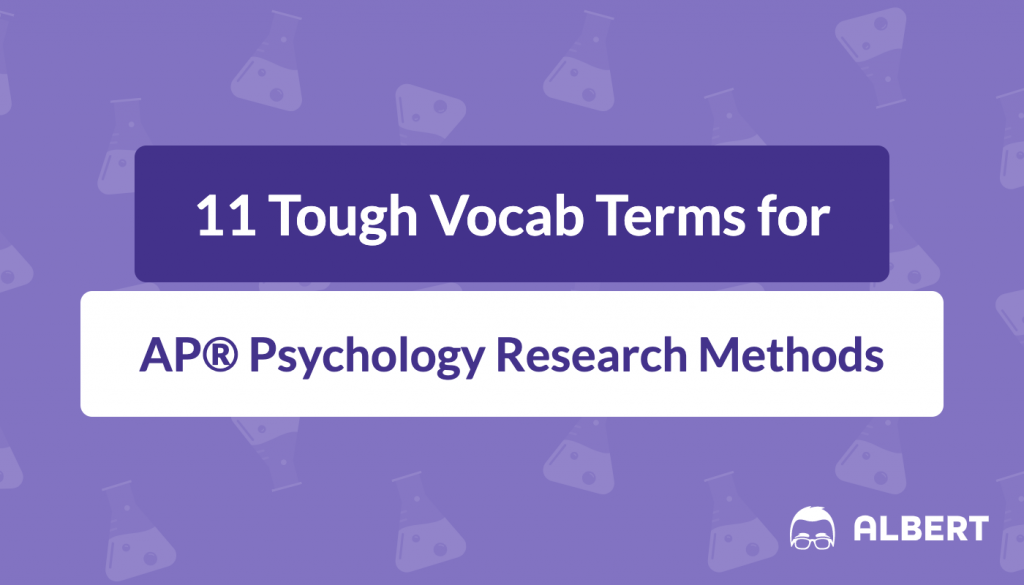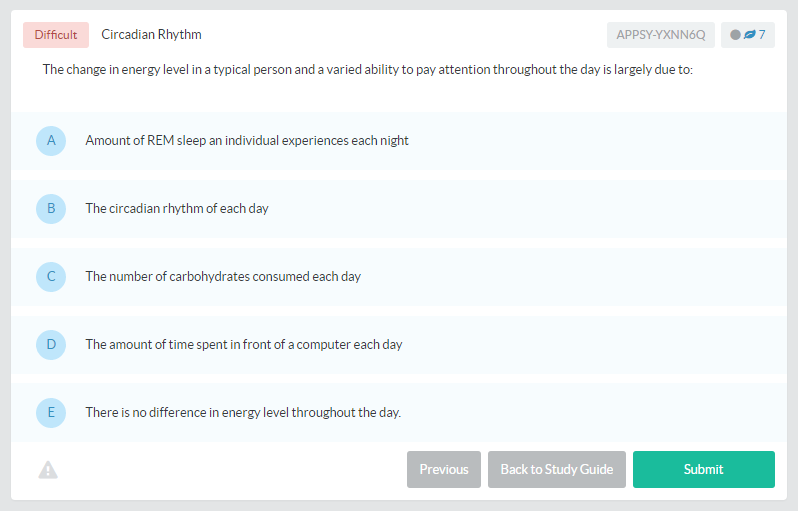The AP® Psychology research methods is one of the most term heavy topics within AP® Psychology. Being able to differentiate between the terms will benefit you on your exam and reduce confusion once you begin running experiments.
1. Operational Definition
The operational definition is a term that is used to describe the procedure of a study and the research variables. When thinking about the operational definition, it is beneficial to visualize what the experiment is measuring and how it is going to be measured.
An example of this would be an experiment that is measuring if Timmy laughs more at girls or boys. The operation definition of this experiment would say what the experiment defines as a laugh. This experiment may operationally define a laugh as a smile with a sound.
By having this operational definition, other psychologists are able to replicate the experiment. The operational definition lets the reader of the experiment know what was deemed a positive or negative result, thereby opening the experiment up for replication and expansion by other psychologists.
2. Random Sample
A random sample is when the group of subjects in your experiment accurately depicts the population. This random sample should fairly depict the overall population, covering various ethnicities, socioeconomic classes, gender, and age.
An example of this would be if we use Timmy’s study again. To have a truly random sampling of people we must get a population of girls and boys that represent all of the different types of people. We would need all races and socioeconomic groups as well as ages. The random sampling also dictates that the experimenter must have little to no bias in choosing the people in the sample. It is advised to choose the participants in an impartial way to retain random sampling. One way that this is often done is by taking every third person in a given population for the study.

3. Random Assignment
Random assignment is different than random sampling in that random sampling deals with choosing who participates in the study. Random assignment, however, dictates which of the selected experimental population will go to the control group or the experimental trial.
This is important, because random assignment keeps the person running the experiment from putting people that he or she thinks will be affected into the experimental group. By randomly assigning people to each group, then the experiment retains validity.
An example of this would be placing a random half of the random sampling, or the selected population, into a placebo group and the other half into the experimental group for a drug trial.
4. Correlation Coefficient
The correlation coefficient is a number that lies between negative one (-1) and positive one (+1). This number represents how close to cause and effect the experiment is. The number one represents that perfect cause and effect in a positive direction and the negative one represents perfect cause and effect in the negative direction.
The experiment usually does not work out to be perfect, making the correlation coefficient a decimal. The close the decimal is to one dictates the strength of the correlation. For example, if .78 was the correlation coefficient, then the strength of the cause and effect would be much higher than .34 correlation. This can be seen pictured to the left.
It is important, however, to note that correlation does not directly make causation. This means that just because something has a strong correlation, it does not mean that the same outcome will always be caused by the independent variable.
5. Illusory Correlation
The illusory correlation is a phenomenon that psychologists must avoid during experimentation. This correlation is when the person believes that a relationship exists between two variables when it does not.
A great example of this are some superstitions like an unwashed, favorite jersey will lead to a win for a sports team. There is not actual relationship between a fan wearing and not washing a jersey and winning the game, but that fan believes that there is.
6. Dependent Variable
The dependent variable is the variable that measures the outcome of the experiment. This is the response. For example, if we are measuring which comedian makes the children laugh, then we will be measuring how many times the children laugh for the dependent variable.
The experimenter should have no influence on what dependent variable takes place; otherwise this would be a skewed test.
7. Independent Variable
The independent variable is what causes the dependent variable. This independent variable would be the comedian in the case of recording the funniest comedian to children. The comedian causes the laughter, which is the dependent variable, making that comedian or comedians the independent variable.
The independent variable must be influenced by the experimenter, because this psychologist must craft the independent variable so that other variables do not influence the dependent variable. To do so would mean that the experiment contains error.
A great way to control the independent variable and the experiment as a whole is by utilizing random sampling and random assignment.
8. Confounding Variable
The confounding variable is the variable that is often referred to as the extraneous variable. This variable is unwanted in the experiment, although the confounding variable unfortunately ends up in many experiments unintentionally. The confounding variable is a variable that the experimenter did not account for initially that affected the dependent variable. For example, the random sampling may result in not so random sample. If the random sample contained mostly one social class and it affected the experiment’s outcome, then that would be the confounding variable.
If the confounding variable is too influential towards the dependent variable, then the experiment could be deemed invalid.
9. Standard Deviation

Standard deviation is a statistical procedure that is done in order to determine how far away from the average result. The standard deviation is a way for the experimenter to tell how much variation is in the results. As the standard deviation gets higher, the more variation is occurring in the data.
For the AP® Psychology exam it is important to know the percentage of the population that occupies one standard deviation, which is sixty-eight percent, and two standard deviations, which is ninety-five percent. The other five percent are within three standard deviations. This can be seen in the bell shaped curve pictured to the right.
10. The Double Blind Procedure
The double blind procedure is when neither the participant in the study nor the person giving the study know who is the control group and who is in the experimental group. This allows the study to detect the Placebo Effect. The Placebo Effect is when a group of people feel an effect of a drug when they have actually only ingested a placebo, which is often a sugar pill that has no effect.
The double blind procedure keeps as much bias out of the procedure as possible, allowing the psychologists doing the procedure to more accurately determine if the result is accurate.
11. Internal Validity
Internal validity is a term that represents the confidence that can be put into the experiment’s results. For an experiment to have internal validity, then all of the confounding variables must have been acknowledged and controlled by the experimenter. Also, there must be a relationship statistically between the independent variable and the dependent variable for internal validity.
Key Takeaway for AP® Psychology
These eleven terms on the research methods portion of AP® Psychology may seem unneeded or common sense; however, in order to construct a more reliable experiment with internal validity one must be wary of them all during experiment crafting.
By being able to pick out parts of an experiment and tell why an experiment is valid or invalid is also a large part of many of the free response questions. Being able to do this will be sure to boost your score on exam day.
Let’s put everything into practice. Try this AP® Psychology practice question:
Looking for more AP® Psychology practice?
Check out our other articles on AP® Psychology.
You can also find thousands of practice questions on Albert.io. Albert.io lets you customize your learning experience to target practice where you need the most help. We’ll give you challenging practice questions to help you achieve mastery of AP Psychology.
Start practicing here.
Are you a teacher or administrator interested in boosting AP® Psychology student outcomes?
Learn more about our school licenses here.









